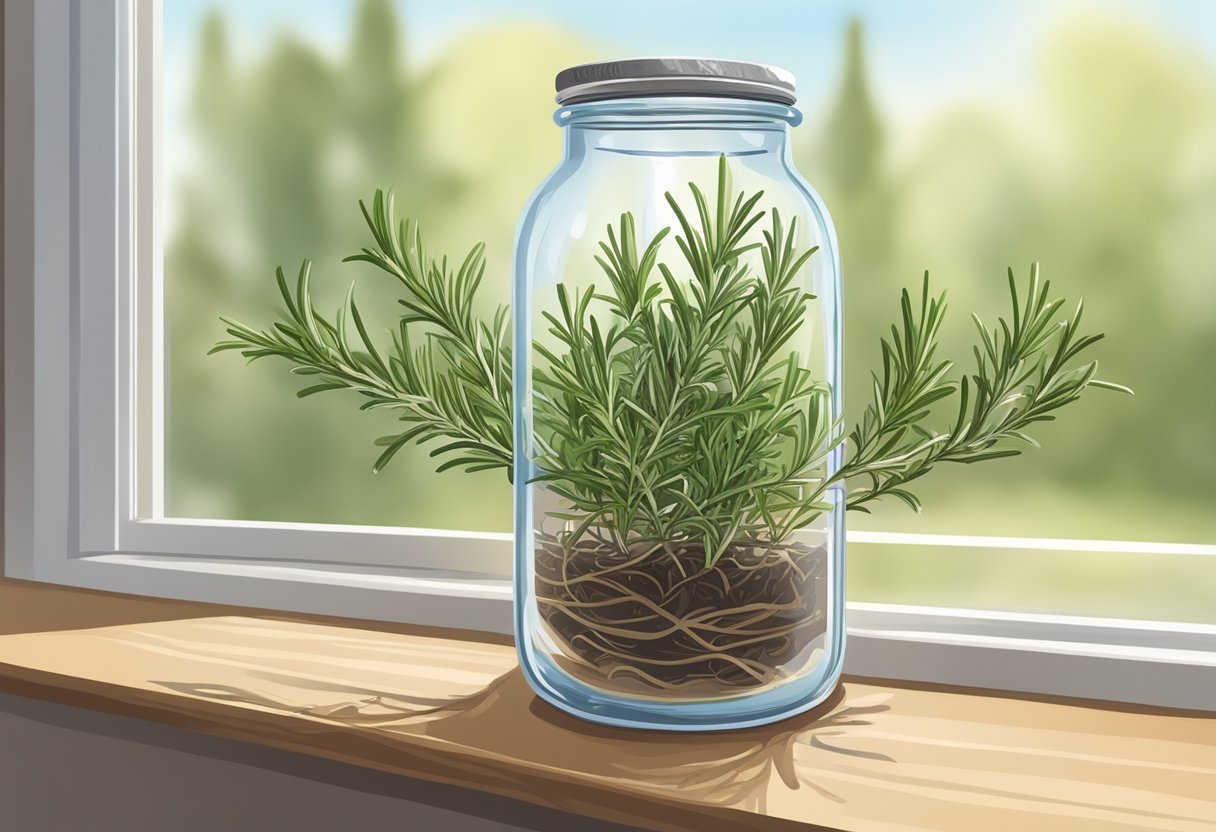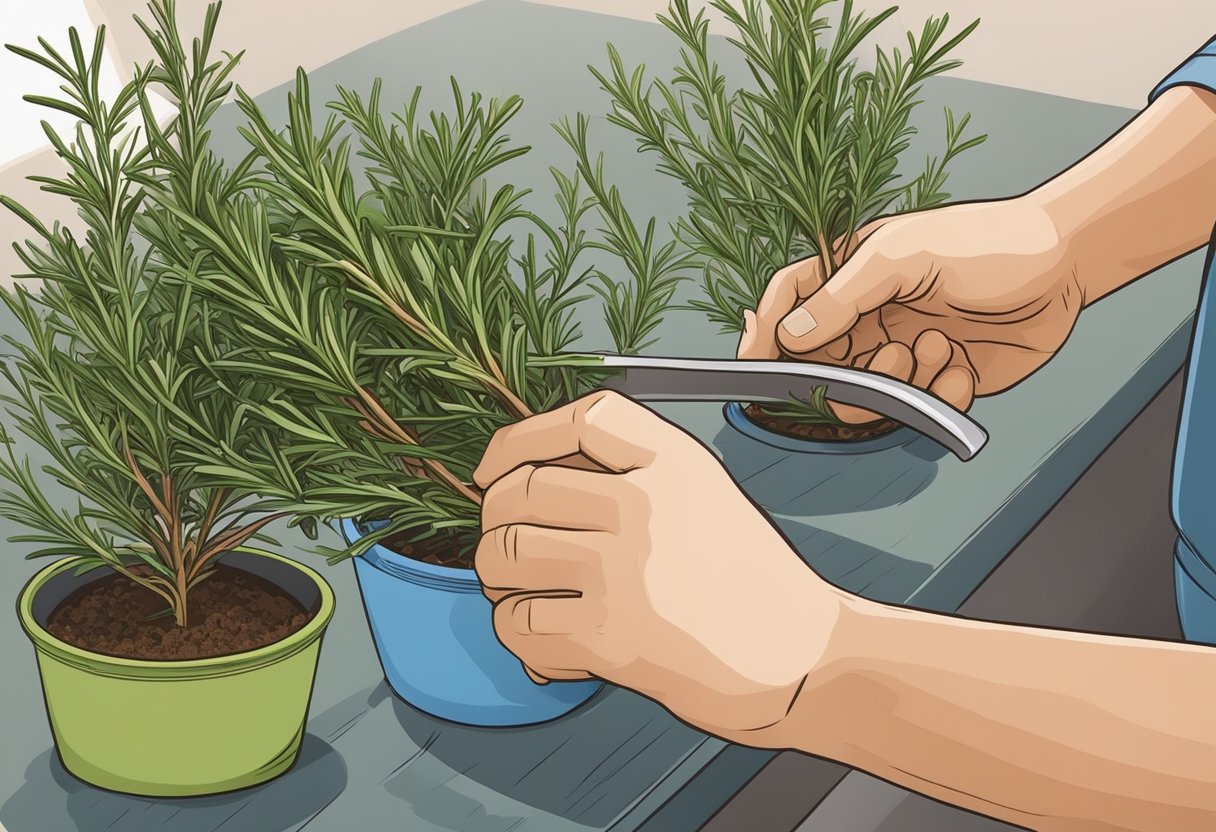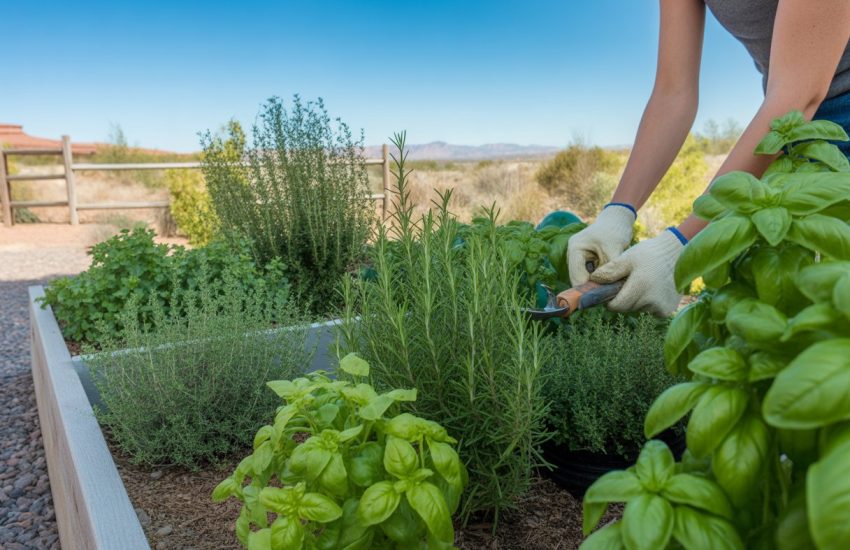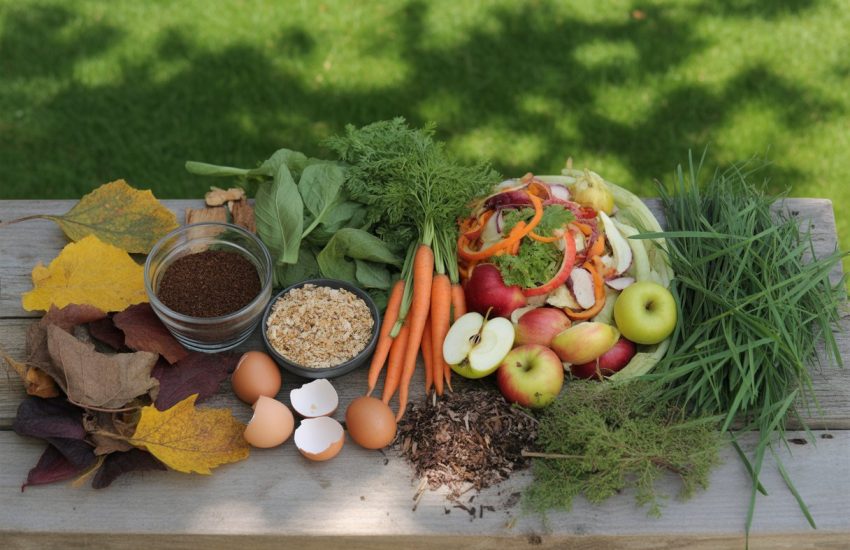Growing Rosemary from Cuttings: A Step-by-Step Guide
Rosemary is a fragrant and versatile herb that is commonly used in cooking, aromatherapy, and medicinal purposes. Growing rosemary from cuttings is an easy and cost-effective way to propagate new plants for your garden or indoor herb collection. With the right techniques and conditions, anyone can successfully grow rosemary from cuttings.

To propagate rosemary from cuttings, it is important to select healthy and mature stems from the parent plant. Cuttings should be taken in the spring or early summer when the plant is actively growing. The best time to take cuttings is in the morning when the plant is well-hydrated. Cuttings should be around 4-6 inches long and taken from the top of the plant.
Once the cuttings have been taken, they should be immediately placed in water or a rooting hormone to encourage root growth. After a few weeks, the cuttings should start to develop roots and can be transplanted into soil. With proper care and attention, the new rosemary plants will thrive and provide fresh herbs for all your culinary needs.
Understanding Rosemary Propagation
Benefits of Growing Rosemary from Cuttings
Growing rosemary from cuttings is a cost-effective and easy way to propagate new plants. It allows gardeners to create new plants that are genetically identical to the parent plant, ensuring that they retain the same desirable traits.
Additionally, rosemary cuttings are generally easier to root than other types of cuttings, making them a great choice for beginner gardeners. They also have a higher success rate than growing from seed, which can be unpredictable.
Types of Cuttings: Softwood vs Hardwood
When propagating rosemary from cuttings, it’s important to understand the two types of cuttings: softwood and hardwood.
Softwood cuttings are taken from new growth that is still green and flexible. These cuttings root quickly and easily, making them a great choice for propagating rosemary. Softwood cuttings should be taken in the spring or early summer when the plant is actively growing.
Hardwood cuttings, on the other hand, are taken from older, woody growth. These cuttings are more difficult to root and take longer to establish, but they are more likely to produce a plant that is better able to withstand harsh conditions. Hardwood cuttings should be taken in the fall or winter when the plant is dormant.
In conclusion, understanding the different types of cuttings and their benefits is essential for successfully propagating rosemary. By selecting the right type of cutting and following proper propagation techniques, gardeners can easily create new plants that are genetically identical to the parent plant.
Selecting the Right Cuttings

Identifying Healthy Stems
When selecting rosemary cuttings for propagation, it is important to choose healthy stems that are free from disease or damage. Look for stems that are at least 4-6 inches long and have several sets of leaves. Avoid stems that are woody or too thin, as they may not root properly.
To ensure that the cutting is healthy, inspect the stem for any signs of disease or pests. Look for discoloration, spots, or holes in the leaves or stem. If any of these are present, it is best to discard the stem and choose another one.
Best Time of Year for Cuttings
The best time to take rosemary cuttings is in late spring or early summer when the plant is actively growing. This is when the stems are the most pliable and have the highest chance of rooting successfully.
It is also important to take cuttings in the morning when the plant is well-hydrated. This will increase the chances of the cutting surviving and rooting properly.
By selecting healthy stems and taking cuttings at the right time of year, gardeners can increase their chances of successfully propagating rosemary from cuttings.
Preparing for Propagation

Gathering Supplies
Before propagating rosemary from cuttings, it is important to gather all the necessary supplies. The following items are needed:
- Pruning shears or sharp scissors
- A small pot or container
- High-quality potting soil
- Perlite or vermiculite (optional)
- A clear plastic bag or plastic wrap
- Water
Creating the Ideal Environment
Creating the ideal environment for rosemary cuttings is crucial for their successful growth. Here are some tips to follow:
- Choose a location that receives bright, indirect sunlight. If propagating indoors, place the pot near a sunny window.
- Use a well-draining potting soil mix. If the soil is too heavy, add perlite or vermiculite to improve drainage.
- Keep the soil moist but not waterlogged. Water the cuttings once the top inch of soil feels dry.
- Cover the pot with a clear plastic bag or plastic wrap to create a humid environment. This will help prevent the cuttings from drying out.
- Keep the pot in a warm location with temperatures between 60-70°F (15-21°C). If propagating indoors, place the pot away from cold drafts.
By following these tips, the cuttings will have a higher chance of rooting and growing into healthy rosemary plants.
Rooting Your Cuttings
Using Rooting Hormones
Before planting the cuttings, it is recommended to use rooting hormones to increase the chances of successful rooting. Rooting hormones contain plant hormones that stimulate the growth of roots. Dip the cut end of the stem cutting into the rooting hormone powder, making sure to cover the cut end completely. Tap off any excess powder.
Planting the Cuttings
Choose a pot with drainage holes and fill it with well-draining soil. Make a hole in the soil with a pencil or your finger, and insert the stem cutting into the hole. Gently press the soil around the cutting to hold it in place. Space the cuttings at least 2 inches apart to avoid overcrowding.
Watering and Care
After planting the cuttings, water them thoroughly. Keep the soil consistently moist, but not waterlogged. Cover the pot with a clear plastic bag or a plastic dome to create a humid environment and retain moisture. Place the pot in a warm, bright location, but out of direct sunlight. Check the cuttings regularly for signs of growth and remove any dead or yellowing leaves. After a few weeks, gently tug on the cuttings to check for roots. Once the cuttings have developed a good root system, they can be transplanted into their own individual pots or planted in the garden.
Caring for New Rosemary Plants

After successfully propagating rosemary from cuttings, it is important to provide proper care to ensure the new plants thrive. This section will cover optimal lighting conditions, when to transplant, and managing pests and diseases.
Optimal Lighting Conditions
Rosemary plants require ample sunlight to grow properly. It is recommended to place the new plants in a location that receives at least six hours of direct sunlight each day. If direct sunlight is not possible, indirect light is also suitable. However, the plants may not grow as vigorously and may become leggy if they do not receive enough light.
When to Transplant
New rosemary plants should be transplanted into larger containers once they have outgrown their current pot. It is important to avoid transplanting during the hottest part of the day to prevent transplant shock. The best time to transplant is in the early morning or late afternoon when the temperatures are cooler.
Managing Pests and Diseases
Rosemary plants are generally resistant to pests and diseases. However, it is important to keep an eye out for any signs of infestation or disease. Common pests that may affect rosemary plants include spider mites, aphids, and whiteflies. These can be controlled with insecticidal soap or neem oil. Diseases such as powdery mildew and root rot can be prevented by avoiding overwatering and ensuring proper drainage.
By following these simple guidelines, new rosemary plants can thrive and provide a bountiful harvest of fragrant and flavorful leaves.
Ongoing Maintenance and Pruning

Pruning for Growth and Health
Regular pruning is essential for maintaining the growth and health of rosemary plants. It is recommended to prune rosemary plants at least once per year, preferably in the spring. Pruning helps to stimulate new growth, which is essential for maintaining a healthy and vibrant plant.
When pruning, it is important to remove any dead or damaged branches, as well as any branches that are growing too close to the ground. This will help to improve air circulation and prevent disease. It is also recommended to remove any branches that are crossing or rubbing against each other, as this can cause damage and inhibit growth.
To prune rosemary, use a sharp pair of pruning shears and make clean cuts at a 45-degree angle. Avoid cutting too close to the main stem, as this can damage the plant. After pruning, it is recommended to water the plant thoroughly to help it recover.
Harvesting Rosemary
Rosemary is a popular culinary herb that is known for its aromatic and flavorful leaves. To harvest rosemary, wait until the plant has reached a height of at least 8 inches and has developed a good number of leaves.
When harvesting, it is recommended to use a sharp pair of scissors or pruning shears to make clean cuts. Avoid pulling the leaves off by hand, as this can damage the plant.
To maintain the aroma and flavor of the rosemary, it is recommended to harvest the leaves in the morning, when the essential oils are most concentrated. After harvesting, rinse the leaves thoroughly with water and pat them dry with a towel.
Overall, regular pruning and harvesting are essential for maintaining the growth, health, and aroma of rosemary plants. With proper care and attention, rosemary can be a beautiful and flavorful addition to any garden or kitchen.
Additional Tips and Tricks

Choosing Containers with Good Drainage
When propagating rosemary from cuttings, it is important to choose containers with good drainage. This is because rosemary cuttings require moist soil to grow, but too much water can cause them to rot. Containers with drainage holes will allow excess water to escape and prevent waterlogging.
Consider using pots made of porous materials such as terra cotta or clay, which allow for better air circulation and drainage. Alternatively, you can add a layer of gravel or sand at the bottom of the container to improve drainage.
Propagating in Different Climates
Rosemary is a hardy plant that can grow in a variety of climates, but it does have some preferences. In general, rosemary prefers warm, dry conditions with plenty of sunlight. However, it can also tolerate cooler temperatures and some shade.
If you live in a hot, dry climate, you may need to water your rosemary cuttings more frequently to prevent them from drying out. In cooler climates, it may be best to propagate rosemary indoors or in a greenhouse to provide the warmth and light it needs to thrive.
Utilizing Companion Planting
Companion planting is the practice of growing different plants together to benefit each other. When it comes to rosemary, lavender is a great companion plant. Lavender has similar growing requirements to rosemary and can help repel pests such as moths and mosquitoes.
Consider planting lavender and rosemary together in the same container or in the same garden bed. Not only will they look beautiful together, but they will also help each other grow and thrive.
By following these additional tips and tricks, you can successfully propagate rosemary from cuttings and enjoy this fragrant herb year-round.
Frequently Asked Questions

What are the steps to propagate rosemary in water?
To propagate rosemary in water, take a 4- to 6-inch cutting from the tip of a healthy rosemary stem. Remove the leaves from the bottom 2 inches of the stem. Place the cutting in a jar filled with water, making sure the bottom 2 inches of the stem are submerged. Change the water every few days to prevent bacteria growth and keep the cutting in a bright, warm location.
How do you successfully root rosemary cuttings in soil?
To root rosemary cuttings in soil, take a 4- to 6-inch cutting from the tip of a healthy rosemary stem. Remove the leaves from the bottom 2 inches of the stem. Dip the bottom of the stem in rooting hormone and plant it in a pot filled with moist, well-draining soil. Keep the soil moist and the cutting in a bright, warm location.
What is the timeframe for rooting rosemary cuttings until they’re ready for transplant?
Rosemary cuttings typically take 2-4 weeks to root. Once the cutting has developed roots that are at least an inch long, it is ready to be transplanted into a larger pot or into the garden.
Can you enhance rosemary cutting propagation using honey?
Some gardeners believe that honey can enhance rosemary cutting propagation by acting as a natural rooting hormone. To use honey, dip the bottom of the cutting in honey before planting it in soil or placing it in water.
What conditions do rosemary cuttings require to root and grow indoors?
Rosemary cuttings require bright, indirect light and warm temperatures to root and grow indoors. Keep the cutting in a location that receives at least 6 hours of sunlight per day and maintain a temperature of 65-75°F.
Does sunlight exposure affect the rooting process of rosemary cuttings?
Yes, sunlight exposure can affect the rooting process of rosemary cuttings. Too much direct sunlight can cause the cutting to dry out, while too little sunlight can slow down the rooting process. It is important to provide the cutting with bright, indirect light for optimal rooting.


